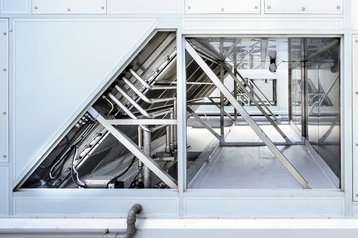After more than a year, and some controversy, ASHRAE (the influential American Society of Heating,Refrigeration and Airconditioning Engineers) is confident it will product a standard for data center energy efficiency this summer.
The data center industry has been somewhat nervous that it will be forced to jump through more hoops by a standard which is too prescriptive. There have been more than a thousand comments on the three open drafts published so far. But the Society says it welcomes all feedback, and has published a fourth - and hopefully final - draft, and believes it will have a completed draft ready for approval at its annaul conference in late June in St Louis. Comments on this draft are still open as we right, but close this weekend, on 29 May.
Setting the bar
ASHRAE says the standard is intended to provide “minimum efficiency” levels for data centers, setting the bar at an “achievable” level, which is not too much of a burden for the industry. It doesn’t have any automatic legal status, but is likely to be referenced in design specifications and building regulations, and is likely to be tightened up over the coming years.
The biggest story on this so far was the Society’s idea of including PUE (power usage effectiveness) in the standard. PUE, popularized by the Green Grid, is the most widely-used measure of data center efficiency, but it is very dependent on climate. This makes it tricky to build it into a standard which covers the latitudes of the United States, and potentially could be global, ASHRAE wanted to set specific PUE levels for different climate zones.
After comments from industry, the idea was struck out of the draft standard, Efficiency will be measured in terms of the individual systems in the data center, with the standard defining electrical and mechanical load components (ELC and MLC). The current batch of proposed changes to the standard are now at a far more granular level of explanations and corrections to a solid draft.
ASHRAE says the standard will set an “achievable” level
The Green Grid is taking this apparent “rejection” very well. In an interview at Datacenter Knowledge, Green Grid president Roger Tipley points out that the PUE that ASHRAE was looking at isn’t the same PUE which the Green Grid has been championing.
Green Grid specified PUE as a way of measuring the efficiency of a data center in operation, but ASHRAE’s standard will apply to designs for buildings, and so it has used Design PUE, based on the specifications of the equipment inside.
Will it cramp our style?
But people we have spoken to are still critical of the current standard. Although PUE has been removed from the specification, the standard still specifies required levels of efficiency for different geographical zones. Only now, using the less-well-known MLC metric, it has become more complex to calculate your efficiency.
”The potential impact of 90.4 will most likely increase the cost of preparing documentation during the design stage to submit plans for building department approvals,” warns Julius Neudorfer in a LinkedIn post. “It may also introduce costly delays to the approval process and limit design options.”
The industry mistrusts anything which looks like it might be over-complex, or become a mandatory requirement, and however good ASHRAE’s past efforts have been, there are people who still see danger here. They also see a danger that it will unfairly disadvantage the colo players.
A colocation data center will probably be built with very efficient systems, but when it is just opened, it will not be very full, so there will be more power and cooling than its servers require. That results in a higher PUE, even though ultimately the colo center should give a full-up single-user site a run for its money.
Some feel that a data center building standard is going to cramp their creativity. how the industry feels will come out in the comments.
The draft is here. For the next two days, you can make comments here.
A version of this story appeared on Green Data Center News



